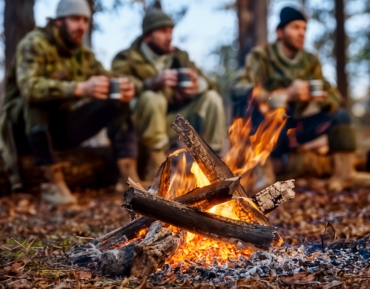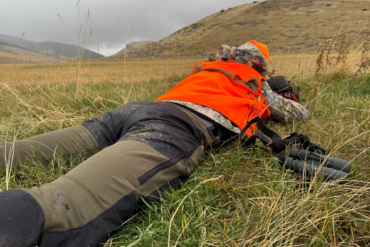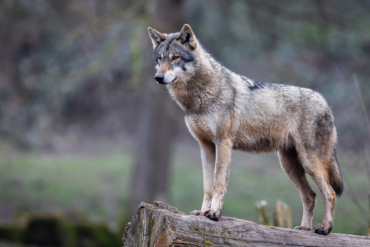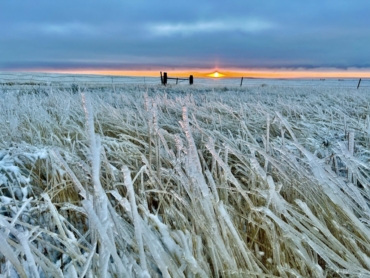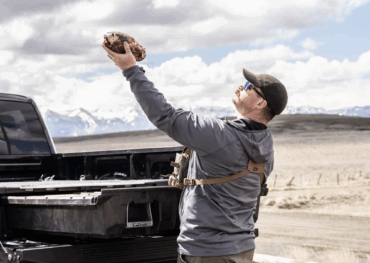If you’re like many people who love the outdoors, you may be ready to transition from powder skiing to fresh spring air and long days of sunlight. Shed hunting can fill the shoulder-season void.
Shed hunting gives a new excuse to be outdoors, exercising and experiencing the woods in the spring. For hunters, it can open up new aspects of the whitetail life cycle as you become familiar with deer habitat. For non-hunters, it’s a beautiful way to explore new terrain with a goal in mind.
“Shed hunting” means searching for deer antlers that naturally fall off after the rut in late winter, around February and March in most places. It also helps hunters inventory bucks that make it through hunting season.
Found antlers make great wilderness-inspired decor and can also be sold or used to make crafty home goods, adornments on tools and jewelry, and healthy chew toys for dogs. Here’s your chance to be a kid on an Easter egg hunt – except trade in the candy and backyards for antlers and forests.
Following some basic tips and using the right gear can lead you to be a successful shed hunter. Below, I point out some of the best tips and products I’ve found over the last few seasons.
Shed Hunting: Laws and Ethics
It’s important to note that deer rely heavily on their wintering grounds for survival, especially during harsh winters. And you could accidentally push them out by searching too soon or too frequently, forcing them to find new food sources and sanctuaries during the toughest conditions of the year.
It’s best to know the area you plan to search and to time your entry after the worst of winter has subsided. Spy on areas ahead of time by using nearby trail cameras or scouting for bucks that have dropped without interrupting their routine.
Several states have very specific laws when it comes to shed hunting, and in some it’s completely illegal. Some states only allow shed hunting during certain dates, some only allow it in particular zones, while many states do not have regulations in place at all.
For the sake of the animals and the conservation of private and public lands, it’s important to know the regulations before shed hunting and to behave respectfully and ethically. If you have any questions, you can call any state’s wildlife regulatory agency for clarity.
How to Shed Hunt
There is no exact method that guarantees you a pile of antlers. The best technique is to put in the miles, keep your eyes scanning, and to expect the unexpected.
Keep an eye out for the white glimmer. Look for the curvature and points, not necessarily the whole shape of an antler. Chances are you will stumble on most right under your feet, so it’s important to look everywhere.
Once you start finding them, you’ll develop a knack for sniffing them out. You’ll be putting miles in, so make sure you’re walking the right miles. Below are some nuggets of knowledge to get you one step closer to success.
Where to Start Looking for Shed Antlers
Deer move to more shelter and warmth as temps drop. Prime bedding areas for deer in the winter are cedar thickets, south- and east-facing slopes, and clumps of trees in open fields. A little scouting on Google Maps or onX Maps saves time and aimless wandering.
Deer move, so you should too. Pinpoint their corridors from bedding to food or water. You’ll learn about the animals as you walk in their footsteps – key if you’re hunting them later in the fall. Fence crossings are also important to hone in on. Antlers are prone to dislodge during the jump and landing of the crossings.
Don’t Forget the Food and Water
Deer spend lots of time eating to refuel calories burnt keeping warm. Winter is hard on them, so they focus on food sources heavily at this time. Follow the travel corridors from bedding to fields with corn, grain, or other food plots. Using binoculars is important in the bigger fields. Let your eyes do the walking whenever possible.
Water sources for deer can be limited due to the freeze. Find the open water. Running creeks, rivers, or springs/seaps can grant the luck necessary to spot the prize.
Bring a Dog
If you’re getting into shed hunting for the first time, chances are you don’t have a trained dog – yet. But they exist. If you have an upland bird dog, you might be able to train it to help you find sheds through scent.
Labrador retrievers, Drahthaars, German shorthair pointers, and other similar breeds are often used for shed hunting. ShedDogTrainer.com is a great training resource for those interested.
Shed Hunting Gear
Gear can help make the process efficient and boost your chances of finding “white gold.” The following are my personal favorites that I find serve many other functions in addition to being great shed hunting tools.
Boot Up
Generally speaking, the more ground you cover, the more likely it is you’ll find antlers. You’ll be thankful for good footwear.
Depending on terrain, you may be able to get away with a solid trail running shoe. But in most areas of the country, you’ll want a good pair of waterproof-breathable hiking boots for early spring conditions.
Use your favorites that you already own and put in some miles. My go-to shoes are my tried and true Danner Gila 6” boots ($93–220). The boots have Gore-Tex liners and a rugged outsole. The Gilas keep feet dry and warm.
And don’t forget a good pair of socks! Nice merino socks are tops for keeping feet comfortable over long miles.
Pack It In, Pack It Out
You’re going to want bring a few things to make your search comfortable. And for this, you’ll want a backpack.
Just about any daypack (or larger) will do. In it, stow snacks, optics (more on this later), extra layers, a warm hat, gloves, compass, and your found sheds!
My personal choice is the Sitka Gear Ascent 12 Pack ($189). Its tough double-weave polyester with PU coating works great for busting through brush and doesn’t snag easily. The DWR finish also repels water, which will keep the contents dry on wet days. It’s a moderately large pack for day use at 1,200 cubic inches – plenty of space for everything I want, even on cold days when I need to carry lots of extra layers.
Budget: For those who can’t drop $200 on a pack, any backpack with lashable points and zip ties is good for shed hunting.
Also, don’t forget a water bottle! Your old Nalgene covered in national park stickers will get you going. And when you want insulating benefits, upgrade to a stainless steel vacuum-insulated Rambler or Hydroflask.
Eye Spy
Binoculars are key in scanning areas where deer may feed, like fields and meadows, and eliminate tedious foot traffic in open spaces. Good magnification and crystal clear focus are essential for zooming in on the tiny details.
You can often find great deals on binoculars at Cabela’s and REI in the early spring, so keep your eyes out for sales.
My personal pair are the Terra ED 10×42 binos ($450). I find their magnification razor-sharp, and they’re super fast at focusing. I personally like the large lenses that gather a lot of light. While this larger pair comes in at just over a pound and a half, I feel that the ergonomics and field of view are worth it.
Budget: You can find yourself a pair of cheaper binoculars, though they’re going to be slightly bulkier. The Nikon Aculon 8×42 is $90 and holds 4.8 stars out of 5 in the 55 reviews on Cabelas.com.
Get the Tech
If you want to level up your shed hunter (and general hunter) status, get the onX Hunt App for access to landowner info, property boundaries, and aerial and topographic imagery. This will open up more private and public land for your quest. Besides the mobile app, onX Hunt can be utilized via a chip for Garmin GPS units or a desktop or laptop for preplanning your mission.
The application’s maps have overlays showing various information. One of the most useful is the “Private Lands” overlay, which includes landowner public tax records, wildlife management zones, acreage, and parcel boundaries.
The best part about having this information at your fingertips is knowing the following at a glance: who owns a piece of property, aerial imagery of that property, and how to acquire permissions for private land use.
You can also look up a contact address or phone number (if available) and mark areas to store them as deer activity hotspots for future reference.
Available from onXmaps.com, the Premium 1 state annual membership costs $29.99, and the Elite annual membership costs $99.
Budget: Google Maps is free. The interface isn’t built for ease of use for plotting and setting waypoints, but it’s the best deal out there until you want an upgrade.
Miscellaneous
Beyond shed hunting-centric gear, don’t forget the basics. Apply sunscreen to block rays that reflect off the snow, and bring a variety of snacks to keep you fueled. Snowshoes and poles are handy if coverage warrants the need for long, snowy hikes.
Once the snow melts, and in warmer climates, remember mosquito repellant for early season biting insects. And never forget the TP for long days in the woods.
Shed hunting will take you on a hiking adventure, with the added bonus of natural rewards if you know where to look.








